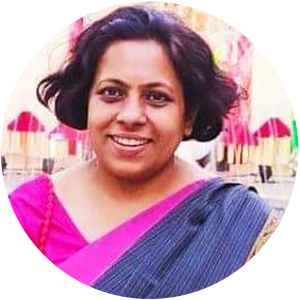From the Editor’s Desk
The Society for Endangered and Lesser-known Languages (SEL) provides an impetus towards the promotion and preservation of indigenous languages. VAAK MANTHAN, a blind peer-reviewed bi-annual bilingual e-journal defines the collection of materials on a wide scope of Linguistics representing lesser-known and endangered languages of India in particular. The Journal, thus, provides a well-grounded platform to professional linguists, research scholars, and language activists dedicated to the promotion and preservation of indigenous languages.
As an editor of this issue, I reflect with you on the challenging task of documentation of the lesser-known and endangered languages while we delve deeper into the understanding of the structure and nature of the different language families. Our mission stands for the necessity of dealing with the tools of Field Linguistics and language description. Although the trajectory generally leads toward the lesser-known and endangered languages spoken in any part of the country, Northeast India occupies a prominent area of investigation as it is home to five of the total six language families of India, viz, Indo-Aryan (Assamese, Bengali), Tibeto-Burman (Kokborok, Nyishi, Adi, Galo, Mishmi, Meitei, Mizo, Hmar and many others), Austro-Asiatic (Khasi, Jaintia), Dravidian (Tamil in Moreh, Manipur) and Tai Kadai. While we give more importance to descriptive and sociolinguistic approaches to documentation and conservation of the indigenous languages, we also invite other perspectives in analyzing such languages like approaches to Language typology, Anthropolinguistics, Linguistic Historiography, Historical Linguistics, Comparative Linguistics, Language Endangerment and Language Maintenance, Multilingualism, Neurolinguistics, Cognitive Linguistics, Applied Linguistics, Psycholinguistics, Semantic approach, Lexicology & Lexicography.
The present volume contains six papers. The first one is an invited paper from Dr. Satarupa Dattamajumdar on ‘A Phonological sketch of the Koch language' The Koch language which is reported as 'Endangered' by UNESCO is spoken in the states of Assam and Meghalaya. The author while describing the speech sounds of Koch, a Tibeto-Burman language, observes the influence of the neighbouring Indo-Aryan languages.
There is a serious concern among intellectuals that linguistic diversity is diminishing due to the marginalization of indigenous languages. Despite some positive measures by the state and the central government about 'third languages in the school curriculum or NEP 2020, the third education policy, discrimination persists in large measure in many parts of the country. This volume presents two such papers 'Linguistic Diversity, Dominance and Marginality: A Case of Northeast India' and 'Language Planning and Policy in India post-NEP 2020'. The first one draws on the dynamics of linguistic dominance and marginalization amidst the hub of linguistic diversity in North East India. According to the 2001 census, there are 26 major tribes and 100 subtribes in Arunachal Pradesh. Colonialism, globalization, and nation-building processes contribute to hegemony and language dominance. Speakers of dominant languages have better access to employment, education, and mobility while speakers of marginalized languages face barriers and discrimination. The paper addresses other related issues like language loss and endangerment, cultural preservation, and identity. The second one 'Language Planning and Policy in India NEP -2020' takes a stand that the perspective towards language practice, language attitude, and language policy does not show alignment. as perceived by the present policy in contrast to the 1968 and 1986 education policies.
Nagaland, regarded as one of the linguistically diverse states in northeast India, is featured in the two papers of this volume - which delineates the Poula variety of the Chakhesang community (the other two are Chokri and Khezha) and the Langa variety of Yimchunger as spoken respectively in the Phek district and Shamator districts of Nagaland. One paper deals with the elaborate ‘Pronouns in Poula’ and the other describes the ‘Gender marking in Yimkhiung’. The fifth paper discusses the attitude of the Juang speakers (of Gonsika and Guptaganga villages of Keonjhar district, in the northern part of Odisha) towards their mother tongue language in a multilingual setting.
The volume incorporates discussion on diverse aspects of lesser-known languages and language planning and policy that both serve the purpose of preservation of the languages as well as the rights of languages. In the future, I will work sincerely with the fraternity of linguists to keep the SEL's flagship journal more enriching, exemplary, and conforming to our mission.





